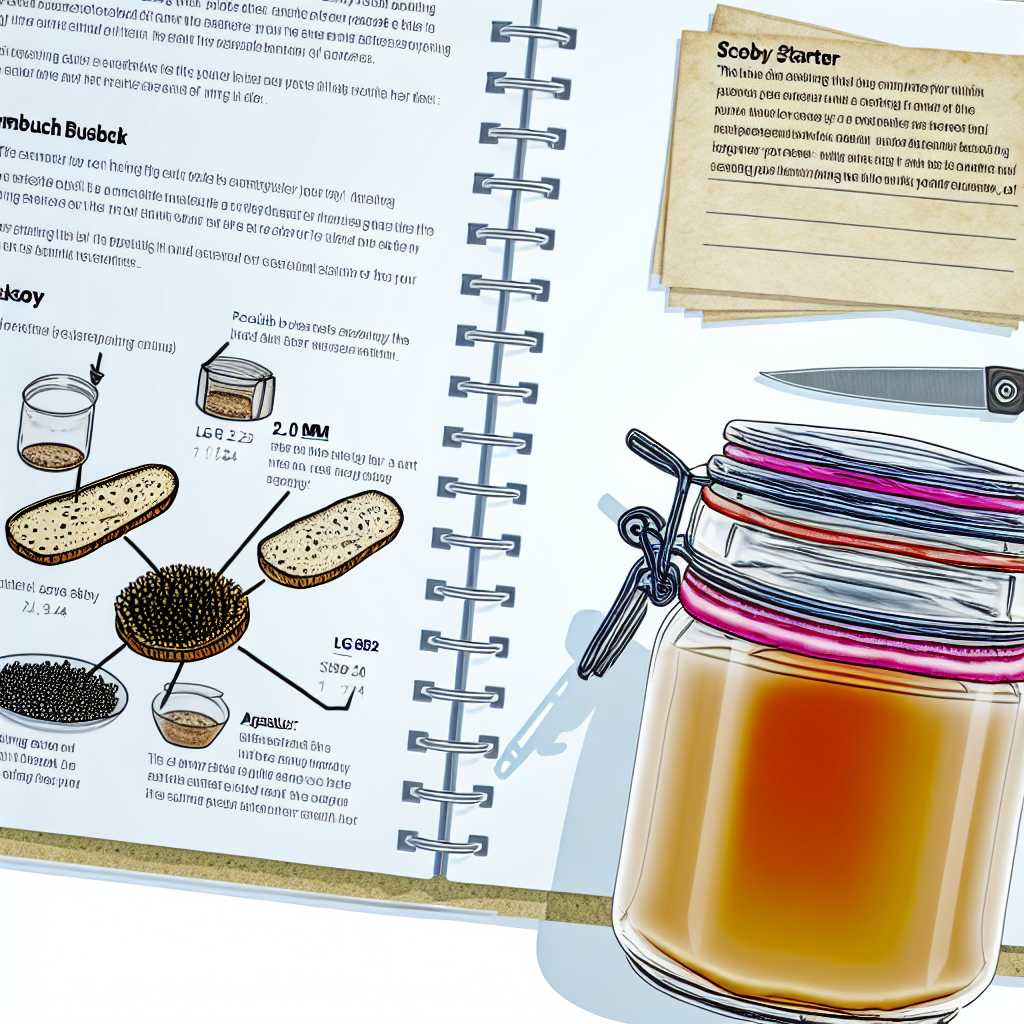The Ultimate Guide to Making Kombucha with a Scoby Starter

The Ultimate Guide to Making Kombucha with a Scoby Starter
Making kombucha at home with a scoby starter can be a fun and rewarding experience. Not only does it give you the opportunity to create a delicious and healthy beverage, but it also allows you to experiment with different flavors and ingredients. In this ultimate guide, we will take you through the process of making kombucha with a scoby starter, step by step. From obtaining the necessary equipment to understanding the fermentation process, this guide will provide you with all the information you need to get started on your kombucha-making journey.
What is Kombucha?
Before we dive into the details of making kombucha with a scoby starter, it’s important to understand what kombucha actually is. Kombucha is a fermented tea beverage that has been enjoyed for centuries, particularly in China, Russia, and Eastern Europe. It is made by fermenting sweetened tea with the help of a scoby, which stands for “symbiotic culture of bacteria and yeast.” This scoby is what gives kombucha its distinctive taste and fizziness.
In addition to its unique flavor, kombucha is also known for its potential health benefits. Some people believe that kombucha can support gut health, improve digestion, and boost immunity. While these claims are not yet fully supported by scientific evidence, many people find that drinking kombucha makes them feel good and can be a tasty alternative to sugary sodas and juices.
Getting Started
The first step in making kombucha with a scoby starter is to gather all the necessary equipment and ingredients. Here’s what you’ll need:
1. A scoby starter: You can obtain a scoby starter from a friend who brews kombucha, or you can purchase one from a reputable source online. Make sure that the scoby is healthy and free from mold or other signs of contamination.
2. Tea: You will need black or green tea to make kombucha. Avoid using flavored teas or teas with added oils, as these can harm the scoby.
3. Sugar: Kombucha needs sugar to ferment, so be sure to have plenty on hand. You can use white sugar, cane sugar, or organic sugar – any type will work.
4. Water: Filtered water is best, as it will not contain any chlorine or other chemicals that could harm the scoby.
5. A large glass jar: You will need a container that can hold at least a gallon of liquid. Make sure it is wide enough to accommodate the scoby and has a wide mouth for easy access.
6. A breathable cover: While the kombucha is fermenting, it needs to be covered with a breathable material, such as a coffee filter or a tea towel. This will allow the scoby to breathe and keep out pests and dust.
7. Bottles for bottling the finished kombucha: Once the kombucha is ready, you will need to transfer it to individual bottles for storage.
Brewing Process
Once you have all the necessary equipment and ingredients, it’s time to start brewing your kombucha. Here’s a step-by-step guide to the brewing process:
1. Boil water: Bring a gallon of filtered water to a boil in a large pot. Once boiling, remove the pot from the heat and add your tea bags or loose-leaf tea. Steep the tea for about 10-15 minutes, then remove the tea bags or strain the tea.
2. Add sugar: While the tea is still hot, add your desired amount of sugar and stir until it is completely dissolved. The sugar is necessary for the scoby to ferment the tea and create kombucha.
3. Cool the tea: Allow the sweetened tea to cool to room temperature before proceeding. You can speed up the cooling process by placing the pot in an ice bath or using a cold water bath.
4. Add the scoby: Once the tea has cooled, carefully pour it into your large glass jar. Then, gently add the scoby starter to the jar, along with any liquid that came with it. Cover the jar with a breathable material and secure it with a rubber band.
5. Ferment the kombucha: Place the jar in a warm, dark place – such as a kitchen cabinet or pantry – and allow it to ferment for 7-14 days. The length of fermentation will depend on your personal taste preferences and the temperature of your home. The scoby will slowly transform the sweet tea into tangy, fizzy kombucha.
6. Bottle the kombucha: Once the kombucha has reached your desired level of tartness and fizziness, it’s time to bottle it. Using clean glass bottles, carefully pour the finished kombucha into the bottles, leaving a little bit of space at the top. You can also add fruit juice, herbs, or other flavorings at this stage if you’d like.
7. Refrigerate the bottles: Seal the bottles and place them in the refrigerator to chill. This will stop the fermentation process and allow the kombucha to carbonate further.
Enjoying Your Homemade Kombucha
Now that you have successfully brewed your very own batch of kombucha with a scoby starter, it’s time to sit back and enjoy the fruits of your labor. Remember that you can always experiment with different flavors and ingredients to create your own unique kombucha recipes. You can also use the scoby from your first batch to start a new batch, or you can pass it along to a friend who is interested in making their own kombucha.
In addition to drinking it straight, you can use kombucha as a base for cocktails, smoothies, salad dressings, and even marinades. The possibilities are endless, so have fun exploring all the ways you can incorporate your homemade kombucha into your daily routine.
Final Thoughts
Making kombucha with a scoby starter is a fun and rewarding process that allows you to create a delicious and healthy beverage at home. By following the steps outlined in this ultimate guide, you can successfully brew your own kombucha and experiment with different flavors and ingredients. Whether you’re a seasoned kombucha brewer or a first-time beginner, making kombucha with a scoby starter is a great way to immerse yourself in the art of fermentation and enjoy the many benefits of this ancient beverage. So why not give it a try and start brewing your own batch of kombucha today? Cheers!
[elementor-template id=”430″]
[elementor-template id=”433″]



0 Comments